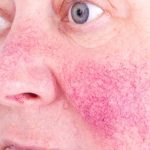(HealthDay News) — A key to successful dieting is to enjoy your food more, while eating less, the U.S. Department of Agriculture says. Your meals should include all of the food groups while limiting sugar, salt and saturated fat, the agency says. The USDA offers these additional suggestions: Learn the ingredients in all foods and beverages you consume, which will help you make healthier choices. Eat slowly, enjoy the taste and texture of your food and pay attention to how you feel. Use a smaller plate. Chose healthier options if you eat out. Feed your sweet tooth with fruit, instead of choices with added sugar. Eat more vegetables, fruit and whole grains. Opt for calorie-free beverages, such as water, unsweetened tea or sparkling water, over soda and alcoholic drinks. Make sweets a once-in-a-while treat. It’s OK to indulge occasionally, not daily.
A little about: Weekly Gravy
All Sauce from Weekly Gravy:
Health Tip: Starting a Healthy Weight Loss Plan
(HealthDay News) — More than 70 percent of U.S. adults are overweight or obese, the National Institute of Diabetes and Digestive and Kidney Diseases says. Are you one of them? Before starting a weight loss plan, you should visit your doctor. The first questions to consider are: How can I change my eating habits so I can reach a healthier weight? How much and what type of exercise do I need to reach a healthier weight? Could I benefit from seeing a nutrition professional or weight-loss specialist? The agency says you should do your research before starting a new weight loss plan. Look for one that will promote healthy behaviors that help you lose weight safely. Also, find one that you will commit to every day, to help keep the weight off permanently.
When Your Medications Are the News

Would you stop taking a medication if you heard a negative news story about it? Sticking with a prescription drug regimen, or “medication adherence,” is already a challenge for many patients, with not taking medications as prescribed being a key reason people struggle to control chronic conditions. Adding to the problem, according to a Danish study, is that negative reports in the media can further erode adherence, especially with new prescriptions. The study looked at one of the most commonly prescribed drugs, statins, which are designed to lower cholesterol and prevent heart disease. It showed that for every negative news story about statins, there was an increased likelihood of people new to the drugs stopping them. That’s particularly dangerous, because people who stop taking their statins have a higher risk of heart disease and death than patients who stay on their medication, according to the research. There’s no doubt that headlines about drugs can be confusing and even overwhelming. There were more than 1,900 stories about statins alone during the 15 years of the study, both positive and negative. And there have been even more since then, including the value of using statins to get LDL (“bad”) cholesterol down below the guideline of 70. This shows that it’s important not to overreact to any one piece of news. If you’re concerned about any drug that… read on >
Money Woes May Take Toll on Black Americans’ Hearts

Money worries may contribute to heart disease in black Americans, a new study suggests. “Stress is known to contribute to disease risk, but the data from our study suggest a possible relationship between financial stress and heart disease that clinicians should be aware of as we research and develop interventions to address social determinants of health disparities,” said study senior author Dr. Cheryl Clark. She is a hospitalist and researcher at Brigham and Women’s Hospital in Boston. Her team analyzed data gathered between 2000 and 2012 from more than 2,200 participants in a long-term study examining heart disease in black men and women in the Jackson, Miss., area. None of the participants had evidence of heart disease at the start of the study. They were asked to rate the level of stress they had in several areas, including financial struggles, such as difficulty paying bills and running out of pocket money. Compared to those without financial stress, the risk of heart disease was nearly three times higher among those with moderate-to-high financial stress, and nearly two times higher among those with mild financial stress, the investigators found. The combination of three important heart disease factors — depression, smoking and diabetes — appeared to explain some of the connection between financial stress and heart disease risk, the study authors said. The findings suggest that financial stress… read on >
Looming Global Crisis Means People’s Diets Must Change: Experts

The average person’s daily diet will need to change drastically during the next three decades to make sure everyone is fed without depleting the planet, a panel of experts has concluded. Global consumption of foods such as red meat and sugar will have to decrease by about half to make sure the Earth will be able to feed a growing population of 10 billion people by 2050, according to the EAT-Lancet Commission on healthy diets from sustainable food systems. At the same time, people will need to double the amount of plant-based foods they eat, including nuts, fruits, vegetables and legumes, experts said. Agriculture must to be redirected to focus on these new food goals, which will put less stress on the environment, researchers said. An effort also will be needed to protect land and ocean resources, and cut food waste globally. While the recommended dietary changes might be wrenching for some, they come with a tremendous benefit in terms of human health, said co-lead commissioner Dr. Walter Willett, a professor of epidemiology and nutrition at the Harvard T.H. Chan School of Public Health. “About 11 million premature deaths per year could be avoided if everyone adopted this healthy diet,” Willett said. “That’s because this reduces unhealthy parts of the diet but substantially increases health-promoting parts of the diet.” The globally sustainable diet recommended by… read on >
1 in 4 Antibiotic Prescriptions Isn’t Needed: Study

Nearly 25 percent of antibiotics prescribed in the United States are given for conditions they aren’t meant to treat, a new study finds. Antibiotics are miracle drugs that can cure deadly bacterial infections. But too often they are given to treat viral infections, such as colds and flu, for which they are ineffective. And the overuse of antibiotics brings public health dangers, experts have been warning. “Antibiotic prescribing is a major driver of the development of bacteria that are resistant to antibiotics,” said lead researcher Dr. Kao-Ping Chua, an assistant professor of pediatrics at the University of Michigan in Ann Arbor. Antibiotic-resistant bacteria are one of the greatest threats to health worldwide, he said. Every year, 2 million Americans develop antibiotic-resistant infections and 23,000 die, according to the U.S. Centers for Disease Control and Prevention. “Given this, it is urgent for providers to eliminate inappropriate antibiotic prescribing, both for the sake of their own patients and for society more broadly,” Chua said. For the study, Chua and his colleagues studied insurance records of more than 19 million kids and adults under age 65. All patients were privately insured. The researchers said more than 23 percent of prescriptions were inappropriate, or not medically justified. The inappropriate prescriptions were mostly for colds, chest infections and coughs. About 36 percent of the prescriptions might have been appropriate but… read on >
Strike Up the Band for Better Grades

Not every budding musician will become a rock star, but studying music has brain bonuses for kids, even those who don’t take up an instrument until their teen years. There’s no doubt that participation in in-school music programs boosts motivation. Mastering an instrument or performing with a group brings a sense of accomplishment and is a wonderful creative outlet. What’s more, it can enhance other types of learning, research has revealed. Scientists compared the brain gains among high schoolers involved in band classes for two or three hours a week to those participating in a fitness program. The young musicians showed faster maturation in the brain’s response to sound and in sensitivity to sound details. Both are important for language skills and, in turn, academic success. The students developed what’s called learning to learn. (This isn’t to say that kids should ignore exercise — fitness has other essential benefits, so it’s important to make time in your children’s lives for both types of activities.) Ideally, music instruction would begin in middle school and continue through high school. One study found that this continued involvement was associated with a high-level of math proficiency in grade 12. Unfortunately, music programs are often the victim of budget cutbacks. If your child’s school doesn’t have a music program, consider investing in outside lessons from a local musician or a… read on >
Recycling: A Renewed Effort Is Needed

Most people know how important recycling is for a healthier environment, yet a survey by the Pew Research Center showed that Americans may not always put that knowledge into practice. Though most people in the United States have access to recycling programs, the rules and practices vary within states and even within communities. Only 28 percent of survey participants said their community strongly encourages recycling and re-use. Even when recycling programs exist, not everyone uses them. Some people aren’t fully aware of what exactly can be recycled in their area. This might explain why recycling rates have been on a plateau, after rising for decades. According to the U.S. Environmental Protection Agency (EPA), Americans recycle or compost 1.5 pounds of waste per person per day — the same amount as in 2006. What’s Being Recycled — An EPA Scorecard: 99 percent of lead-acid batteries from cars and trucks. 92 percent of corrugated cardboard boxes. 71 percent of steel cans. 62 percent of major appliances. 55 percent of aluminum beer and soda cans. 30 percent of high-density polyethylene containers such as milk jugs. One bright spot is that people are doing better at creating less trash to start with. That’s fallen from 4.7 pounds per person per day to 4.4 pounds, an amount that could go down even further by tweaking shopping habits. First, look for… read on >
Dermatologists Cut Back on Antibiotics But Still Prescribe the Most

U.S. dermatologists are prescribing fewer antibiotics overall but are writing more short-term orders for the drugs, a new study finds. Dermatologists prescribe more antibiotics per doctor than any other medical specialty — more than 7.1 million prescriptions per year, the University of Pennsylvania researchers said. According to their analysis of 2008-2016 data from privately insured patients, antibiotic prescriptions by dermatologists fell from 3.36 to 2.13 per 100 visits. That works out to about 500,000 fewer antibiotic prescriptions a year. The drop was significant among patients taking extended courses of antibiotics — down 53 percent over the study period. That includes a 28 percent reduction in antibiotic prescriptions for acne, the study authors said. But the investigators found a nearly 70 percent surge in short-term use of antibiotics, especially for skin-surgery patients. Those prescriptions rose from 3.92 to 6.65 per 100 visits. In addition, antibiotic prescriptions associated with cysts increased 35 percent, according to the study published Jan. 16 in JAMA Dermatology. Many dermatological patients, including those taking antibiotics for inflammatory skin conditions such as acne and rosacea, may stay on antibiotics for long periods. That’s an issue, because overuse of antibiotics can lead to reduced effectiveness, the researchers explained. “Overall, our findings are hopefully a sign that we’re making progress, but we need to evaluate how we can optimize the use of antibiotics in dermatologic… read on >
Heart-Healthy Living Also Wards Off Type 2 Diabetes

There could be an added bonus to keeping your cardiovascular health on track — a heart-healthy lifestyle can also prevent type 2 diabetes, researchers say. And it’s better to prevent type 2 diabetes than to have to treat it, the Ohio State University researchers added. “Healthy people need to work to stay healthy. Follow the guidelines. Don’t proceed to high blood sugar and then worry about stopping diabetes,” said study leader Dr. Joshua Joseph, an endocrinologist at the university’s Wexner Medical Center, in Columbus, Ohio. For the study, the researchers assessed diabetes among more than 7,700 participants in a stroke study. The investigators used the American Heart Association’s “Life’s Simple 7” factors to measure heart health. That well-known tool assesses physical activity, diet, weight, cholesterol, blood pressure, blood sugar (glucose) and tobacco use. Participants who were in the recommended ranges for at least four of the seven heart health factors had a 70 percent lower risk of developing diabetes over 10 years, according to the report. “What’s interesting is when we compared people who had normal blood glucose and those who already had impaired blood glucose,” Joseph said. “Those in normal levels who attained four or more guideline factors had an 80 percent lower risk of developing diabetes. Those who were already diabetic or prediabetic and met four of the factors had no change in… read on >









